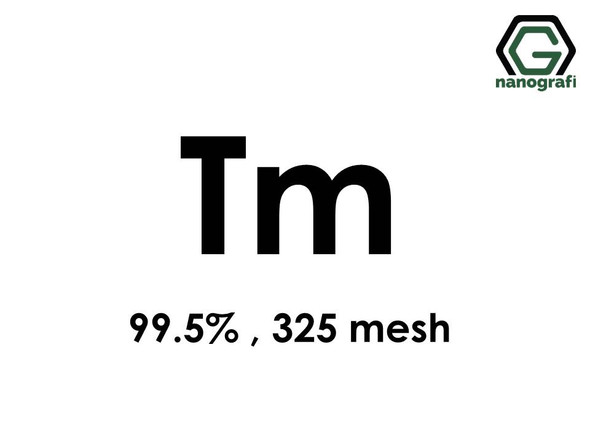Holmium (Ho) Micron Powder, Purity: 99.5 %, Size: 325 mesh
- SKU:
- NG07RE1301
- Shipping:
- Calculated at Checkout
Frequently bought together:
Description
25 grams/305 €
100 grams/1531 €
Please contact us for quotes on larger quantities !!!
Holmium (Ho) Micron Powder
Purity: 99.5 %, Size: 325 mesh
Technical Properties:
| Purity | 99.5% |
| Particle | 325 mesh |
| Density | 8.795 g/cc |
| Melting Point | 1474 °C |
| Boiling Point | 2695 °C |
| Electrical Resistivity | 87.0 microhm-cm @ 25 °C |
| CAS No | 7440-60-0 |
Applications:
- Magnetics & Field Generation: Holmium possesses the highest magnetic moment of any naturally occurring element, making it ideal for generating intense artificial magnetic fields. It is used in magnetic flux concentrators, nuclear magnetic resonance (NMR) systems, and magneto-optical devices, where precise field control is essential. The micron-scale powder form allows for uniform alloying and integration into magnetic composites.
- Glass & Ceramic Manufacturing: Holmium powder is widely used as a colorant in specialty glass and ceramic formulations, imparting yellow to red hues depending on concentration and matrix composition. It is also added to cubic zirconia to produce dichroic yellow coloration, enhancing visual depth and aesthetic appeal in decorative and optical-grade materials.
- Medical & Dental Technologies: Due to its magnetic and optical properties, holmium is used in microwave equipment and laser systems designed for eye-safe medical and dental procedures. It supports applications in minimally invasive surgery, tissue ablation, and precision diagnostics, especially where controlled energy delivery is required.
- Optics & Photonics: Holmium-doped materials are employed in solid-state lasers, optical amplifiers, and spectroscopic calibration standards. Its sharp absorption bands in the infrared region make it valuable for laser wavelength tuning, optical filtering, and fiber optic systems.
- Alloying & Metallurgical Applications: Holmium is used as an additive in rare earth alloys to modify magnetic and thermal properties. It contributes to high-performance magnets, temperature-resistant materials, and specialty metallurgical formulations for aerospace and defense sectors.






